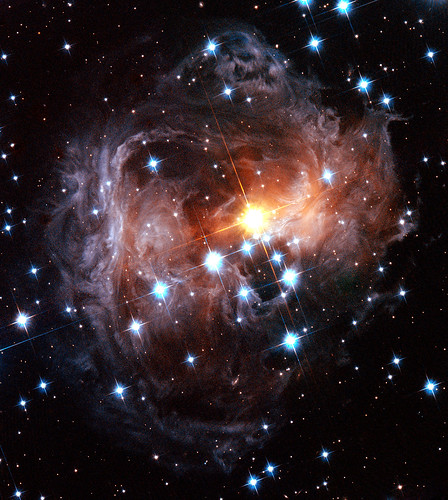Hubble Decision

The unusual variable star V838 Monocerotis (V838 Mon) continues to puzzle astronomers. This previously inconspicuous star underwent an outburst early in 2002, during which it temporarily increased in brightness to become 600,000 times more luminous than our Sun. Light from this sudden eruption is illuminating the interstellar dust surrounding the star, producing the most spectacular "light echo" in the history of astronomy.
The image above was recently captured by the Hubble Space Telescope, which is in need of repair, according to this (among others) CBC report:
NASA officials met Friday to decide whether to risk a space shuttle flight on a mission to repair the Hubble space telescope.
Michael Griffin, the agency administrator, is scheduled to announce Tuesday at Goddard Space Flight Center in Greenbelt, Md., whether the mission will take place.
NASA says a mission to repair the Hubble telescope carries a higher risk.
(NASA/Associated Press) Although the space agency hasn’t said anything officially, University of Wisconsin-Madison astronomer Jay Gallagher, a member of a science team responsible for a camera in the Hubble telescope, says the signs are promising.The 16-year-old telescope has been repaired four times since its launch in 1990. A fifth repair mission was cancelled after the 2003 space shuttle Columbia tragedy that killed seven astronauts.
NASA officials decided to cancel any future repairs of Hubble, saying it was a matter of shuttle safety. If a spacecraft heading to the telescope encountered a problem, there would be no safety net, since the astronauts would not be able to reach the International Space Station from Hubble’s orbit.
If Tuesday’s announcement gives the go-ahead for the mission, it could prolong Hubble’s ability to capture some of the most spectacular images of the universe well into the next decade. If the repair doesn’t take place, the telescope will deteriorate by 2009 or 2010.